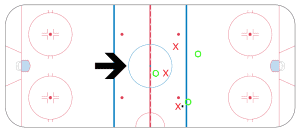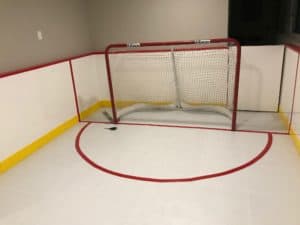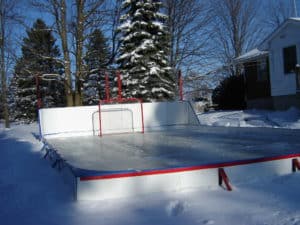Have you ever heard that the goal post is a goalie’s best friend? Well if that is true, the blue line must be a defenseman’s best friend. Yes, it has tripped me countless times, but as a defenseman I still consider it my best friend. When I was young, coaches always told me to take my man at the blue line, but I wasn’t told even one time why I was supposed to do that. Since I didn’t know why it was so important, all I could think about was how that meant I couldn’t recover if I made a mistake. I pictured myself missing and the puck carrier going around me for a breakaway.

My coaches were 100% right, but since I didn’t know why I should take my man at the blue line, and all I could see were the risks, I didn’t follow their instruction. I don’t think it’s their fault, my guess is that they themselves didn’t really know why, that’s just what they were taught to say. So now is the time to shed light on why it’s so important, and hopefully prevent some young players today from ignoring it just like I did. This single action can prevent goals and even generate offense if done well, it could be one of the most important skills a defenseman can develop.
There is one simple rule which is the foundation for why the blue line matters so much. In the NHL rulebook, it is Rule 83 (the Offside rule). The Offside rule is long but can be reduced down to one sentence, “Players of the attacking team must not precede the puck into the attacking zone.” In other words, the puck must cross the blue line into the offensive zone before any member of the attacking team.
To demonstrate why this is important, let’s consider a 3 on 2 rush with a late back checker trying to make it 3 on 3 (see sketch below).

If the strong side defenseman makes a move on the puck carrier right before the blue line, the puck carrier has to make a countermove to avoid the defenseman’s check. With that single countermove, the other 2 attackers in the 3 on 2 either:
- Continue skating and go offside, or
- Slow down or change directions in order to avoid the offside
In the first case, the threat of the 3 on 2 is over with an offside call, followed by a faceoff with a 50% chance to get the puck back. In the other case, the reduced speed or longer route of the attacker has allowed the back checker to catch up and make it a 3 on 3 which significantly improves the chances of preventing a goal.
Now, if the defenseman can strip the puck from the puck carrier at the blue line, he/she is poised to make a quick transition to offense. If the defenseman can get possession and make a quick pass up to a forward, it will result in an odd man rush the other way and a quality scoring chance.
One important thing to note is that the defenseman doesn’t need to initiate contact at the blue line, he/she just has to make a move to force the puck carrier to make a move. In fact, it is not a good idea to go for a big body check in this scenario. The three best methods to force a move by the puck carrier in this case are tightening the gap, poke check, and fake poke check. Any of these methods will work and will maintain solid defensive positioning for the defenseman.
There you have it, the real reason defensemen should take their man at the blue line. A critical skill that when applied, will make the player much more effective both defensively and offensively. Be sure to check back soon for the next post where I will debunk the myth that the defenseman should always take away the pass on a 2 on 1. Please leave me a comment and tell me if there are any other reasons you think the defenseman should take the man at the blue line.


